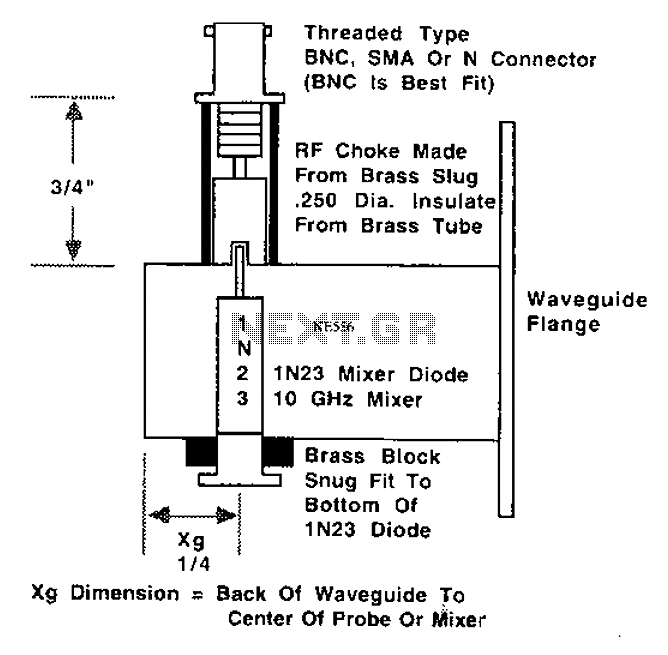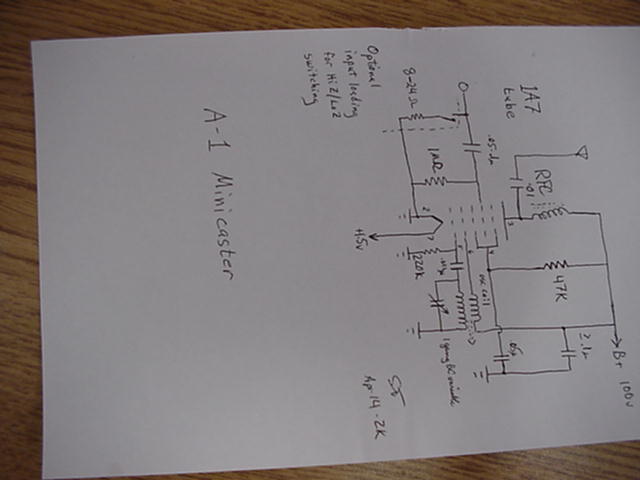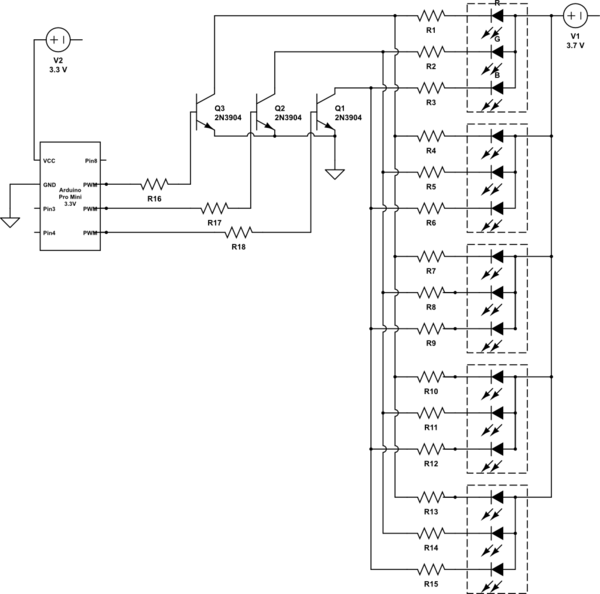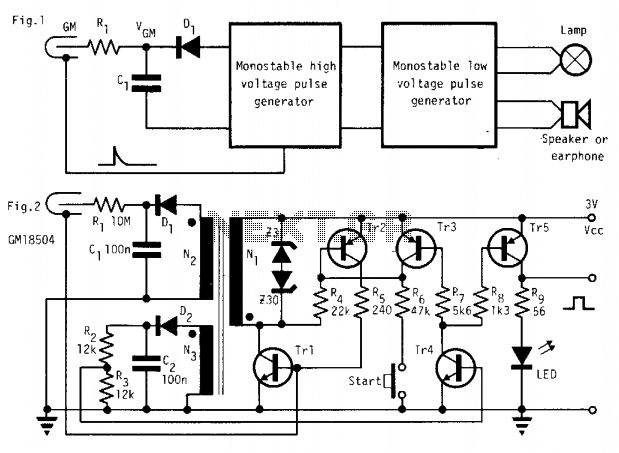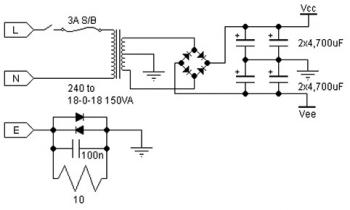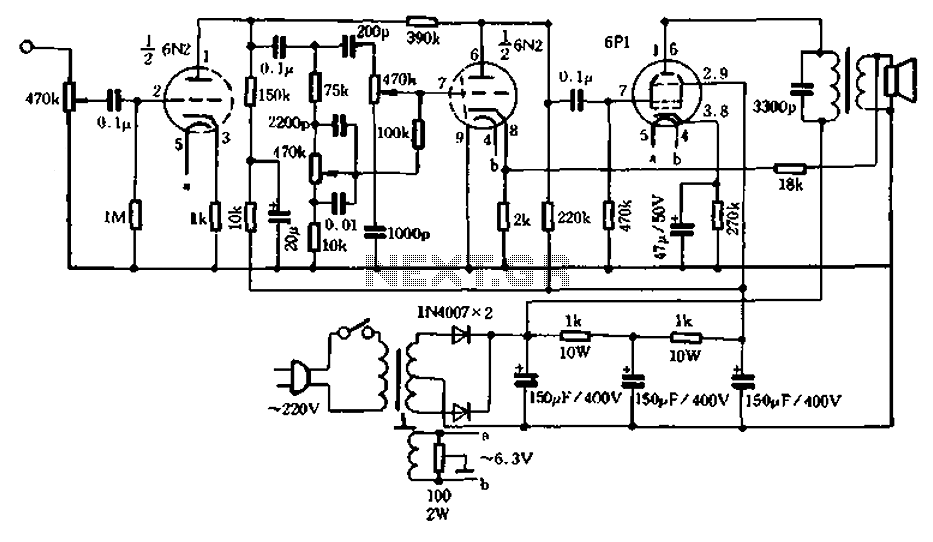
early GEC transistor radio

The world's first practical crystal amplifying device was introduced in 1948, marking the beginning of commercially available transistor radios in Britain. At that time, an average radio enthusiast or constructor would have been adjusting to new miniature glass valves, exploring the potential for new television channels, or learning how to integrate unfamiliar FM circuitry into domestic wireless sets. Additionally, those who followed developments from America would have encountered an innovative device known as the Germanium Triode, alongside reports in the radio press about its experimental production by British companies. For those interested in building circuits with this technology, the available resources and guidance would have been limited. In June 1948, Bell Telephone Laboratories officially announced the Point Contact Transistor, which was also referred to as a Germanium Triode or Crystal Valve in various journals. Despite its numerous drawbacks and unpredictable characteristics, it represented a significant advancement and laid the groundwork for future devices. British companies such as British Thompson Houston and G.E.C. produced point contact transistors in the same year, and evidence from France suggests that Bell may not have been the sole inventor. In 1951, Shockley of Bell introduced a working junction transistor, which became commercially available in pilot quantities in the United States the following year. While the junction transistor was more reliable, it initially suffered from poor frequency response. Research efforts aimed at addressing these issues culminated in the release of the first commercial transistor radio in the U.S. in late 1954, followed by the first transistor radio available for purchase in the U.K. in March 1956. This timeline indicates that British enthusiasts had a longer wait before they could build devices that were not yet widely available in stores. This situation contrasts with the home construction era of the 1920s, where constructors had access to a variety of valve suppliers, magazine designs, and kits. In contrast, enthusiasts prior to 1956 faced significant challenges due to a lack of available devices and established designs. The period following 1957 saw the emergence of surplus junction transistors on the hobby market, mirroring the construction boom of the 1920s and early 1930s. The transistor's evolution is linked to the Cats Whisker crystal detector, although advancements in semiconductor physics and purification techniques were crucial for developing amplifying crystals. The transistor operates through the contact of two fine metal wires, approximately 0.005 inches apart, with the surface of a carefully doped germanium crystal to facilitate charge carrier availability. The transistor action occurs at or near the crystal's surface. The physics behind its operation remains partially unexplained, and later manufactured devices likely functioned differently from the original experimental transistors developed at Bell Labs due to the adoption of a "forming" technique that involved sending a brief, high-current pulse through one whisker.
The development of the first practical crystal amplifying device, the Point Contact Transistor, revolutionized the field of electronics, particularly in radio technology. This device utilized germanium, a semiconductor material, to amplify electrical signals. The construction of the Point Contact Transistor involved precise engineering, where two fine metal contacts were placed on a germanium crystal. The characteristics of the transistor allowed it to function effectively as an amplifier and switch, leading to its widespread adoption in various electronic applications.
The transition from the Point Contact Transistor to the more advanced junction transistor marked a significant milestone in the evolution of transistors. The junction transistor, designed with improved predictability and performance, featured a junction of p-type and n-type semiconductor materials, which enhanced its frequency response and overall efficiency. This advancement paved the way for the mass production of transistor radios, which became a staple in consumer electronics.
The impact of these innovations extended beyond the realm of radio technology, influencing the design and development of various electronic devices, including televisions, computers, and other communication systems. The introduction of the transistor facilitated miniaturization in electronics, leading to the development of portable and battery-operated devices that transformed the way people interacted with technology.
In conclusion, the advent of the Point Contact Transistor and its subsequent evolution into the junction transistor represents a critical chapter in the history of electronics. The challenges faced by early enthusiasts and constructors highlight the ingenuity and resourcefulness of individuals in the field during a transformative period. The advancements in semiconductor technology laid the groundwork for the modern electronic landscape, showcasing the importance of continuous innovation and research in driving progress within the industry.The world`s first practical crystal amplifying device, in 1948, and the dawn of the commercially available Transistor Radio in Britain. If I had been an average radio enthusiast or constructor at that time then I would have been coming to terms with the new miniature all glass valves, learning about the possibility of new TV channels or reading
about how to incorporate strange FM circuitry into the Domestic Wireless set. However, if I had also followed the accounts from America, since its introduction, of this exotic device called a Germanium Triode and had been further tantalized by snippets in the radio press referring to its experimental production by British companies and also harboured a desire to build a circuit using it, what would have been available to me in terms of circuits or guidance First let us put down a few mile posts so we can see exactly where we are in the scheme of things. What had been officially announced in June 1948 by Bell Telephone Laboratories was a Point Contact Transistor.
Journals subsequently referred to it quaintly as a Germanium Triode or a Crystal Valve. It had many drawbacks and wayward characteristics but it worked and it paved the way for other devices. Amongst early contenders in the field in the U. K. were British Thompson Houston and G. E. C. both of which appear to have produced point contact transistors in 1948 and there is new evidence from France to challenge the Bell claim that they were the sole inventors (see postscript).
In 1951 Shockley at Bell announced a working junction transistor and the following year they were available commercially in pilot quantities in the United States. The junction transistor was a much more predictable beast but its Achilles heel initially was its poor frequency response.
However research was going on to overcome these difficulties and in late 1954 the worlds first commercial transistor radio went on limited sale in the U. S. A. while in March 1956 Britons could buy the U. K`s first transistor radio over the counter. So we can see that for our enthusiast constructor the period when he could build something that wasn`t yet freely available in the shops would have been that bit longer in Britain than in the States.
There are probably parallels to be drawn here with the era of home construction that existed in the 1920`s but there are also important differences. Whereas constructors in the 1920`s were served by suppliers of valves, a stream of magazine designs and even kits of parts, our enthusiast, prior to about 1956, would have faced a much more formidable challenge with a dearth of available devices and proven designs.
The period after about 1957, when manufacturer`s reject and surplus junction transistors began to appear on the hobby market, through to the early 1960`s is probably a more direct echo of the construction boom of the 1920`s and early 1930`s. It is a descendant of the Cats Whisker crystal detector, although the increase in the understanding of the physics of semiconductors and the improvement in purifying techniques required to make the leap to an amplifying crystal was enormous.
Two fine metal wires make contact approximately. 005 of an inch apart with the surface of a very pure crystal of germanium which has been carefully doped to provide an availability of charge carriers. The transistor action takes place at, or close to, the surface of the crystal. To complicate things further the physics of operation have probably never been completely explained while the devices that were later manufactured probably operated differently from the first experimental transistor at the Bell labs.
This is because of the adoption of "forming" a technique which involved sending a brief but heavy pulse of current through one whisker. This lightly 🔗 External reference
The development of the first practical crystal amplifying device, the Point Contact Transistor, revolutionized the field of electronics, particularly in radio technology. This device utilized germanium, a semiconductor material, to amplify electrical signals. The construction of the Point Contact Transistor involved precise engineering, where two fine metal contacts were placed on a germanium crystal. The characteristics of the transistor allowed it to function effectively as an amplifier and switch, leading to its widespread adoption in various electronic applications.
The transition from the Point Contact Transistor to the more advanced junction transistor marked a significant milestone in the evolution of transistors. The junction transistor, designed with improved predictability and performance, featured a junction of p-type and n-type semiconductor materials, which enhanced its frequency response and overall efficiency. This advancement paved the way for the mass production of transistor radios, which became a staple in consumer electronics.
The impact of these innovations extended beyond the realm of radio technology, influencing the design and development of various electronic devices, including televisions, computers, and other communication systems. The introduction of the transistor facilitated miniaturization in electronics, leading to the development of portable and battery-operated devices that transformed the way people interacted with technology.
In conclusion, the advent of the Point Contact Transistor and its subsequent evolution into the junction transistor represents a critical chapter in the history of electronics. The challenges faced by early enthusiasts and constructors highlight the ingenuity and resourcefulness of individuals in the field during a transformative period. The advancements in semiconductor technology laid the groundwork for the modern electronic landscape, showcasing the importance of continuous innovation and research in driving progress within the industry.The world`s first practical crystal amplifying device, in 1948, and the dawn of the commercially available Transistor Radio in Britain. If I had been an average radio enthusiast or constructor at that time then I would have been coming to terms with the new miniature all glass valves, learning about the possibility of new TV channels or reading
about how to incorporate strange FM circuitry into the Domestic Wireless set. However, if I had also followed the accounts from America, since its introduction, of this exotic device called a Germanium Triode and had been further tantalized by snippets in the radio press referring to its experimental production by British companies and also harboured a desire to build a circuit using it, what would have been available to me in terms of circuits or guidance First let us put down a few mile posts so we can see exactly where we are in the scheme of things. What had been officially announced in June 1948 by Bell Telephone Laboratories was a Point Contact Transistor.
Journals subsequently referred to it quaintly as a Germanium Triode or a Crystal Valve. It had many drawbacks and wayward characteristics but it worked and it paved the way for other devices. Amongst early contenders in the field in the U. K. were British Thompson Houston and G. E. C. both of which appear to have produced point contact transistors in 1948 and there is new evidence from France to challenge the Bell claim that they were the sole inventors (see postscript).
In 1951 Shockley at Bell announced a working junction transistor and the following year they were available commercially in pilot quantities in the United States. The junction transistor was a much more predictable beast but its Achilles heel initially was its poor frequency response.
However research was going on to overcome these difficulties and in late 1954 the worlds first commercial transistor radio went on limited sale in the U. S. A. while in March 1956 Britons could buy the U. K`s first transistor radio over the counter. So we can see that for our enthusiast constructor the period when he could build something that wasn`t yet freely available in the shops would have been that bit longer in Britain than in the States.
There are probably parallels to be drawn here with the era of home construction that existed in the 1920`s but there are also important differences. Whereas constructors in the 1920`s were served by suppliers of valves, a stream of magazine designs and even kits of parts, our enthusiast, prior to about 1956, would have faced a much more formidable challenge with a dearth of available devices and proven designs.
The period after about 1957, when manufacturer`s reject and surplus junction transistors began to appear on the hobby market, through to the early 1960`s is probably a more direct echo of the construction boom of the 1920`s and early 1930`s. It is a descendant of the Cats Whisker crystal detector, although the increase in the understanding of the physics of semiconductors and the improvement in purifying techniques required to make the leap to an amplifying crystal was enormous.
Two fine metal wires make contact approximately. 005 of an inch apart with the surface of a very pure crystal of germanium which has been carefully doped to provide an availability of charge carriers. The transistor action takes place at, or close to, the surface of the crystal. To complicate things further the physics of operation have probably never been completely explained while the devices that were later manufactured probably operated differently from the first experimental transistor at the Bell labs.
This is because of the adoption of "forming" a technique which involved sending a brief but heavy pulse of current through one whisker. This lightly 🔗 External reference
